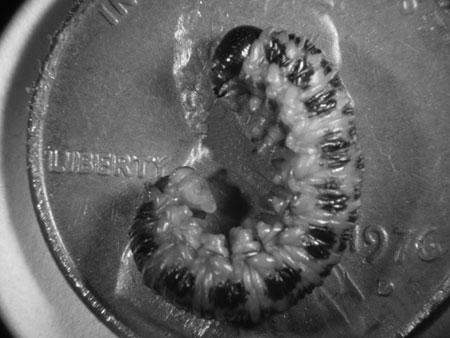Dogwood sawfly larva: a wood destroying pest?
Editor’s note: This article is from the archives of the MSU Crop Advisory Team Alerts. Check the label of any pesticide referenced to ensure your use is included.
Not only is the dogwood sawfly a pest of dogwood trees, it can also be a problem to homeowners by boring into landscape timbers and other wooden objects in ground contact in the fall of year. It doesn’t eat wood, but instead it chews out little chambers in which to spend the winter.

A dogwood sawfly: These may be found boring into landscape
timbers and other wooden objects in ground contact.
There are three species of Macrempytus (Hymenoptera: Tenthredinidae) sawflies in the eastern United States. All three species feed on the foliage of dogwood. Early larval stages are covered in a white powdery substance, which is thought to mimic bird droppings. This white covering is shed in the fall as the larvae prepare to pupate. The larvae construct pupal chambers by boring into dead wood on the ground.
Sprays containing Sevin, cyfluthrin or Malathion will control them on dogwood. Their damage to wood can be controlled by applying residual insecticide, such as cyfluthrin, to the areas where the larvae are boring.



 Print
Print Email
Email



